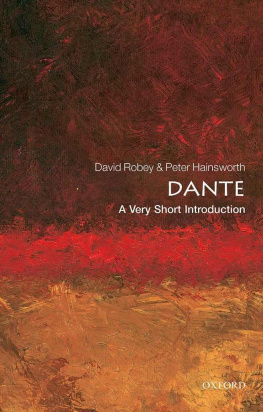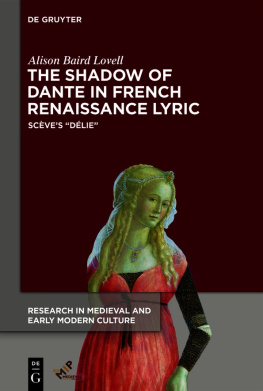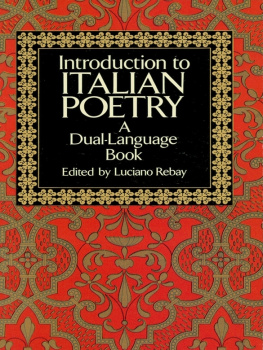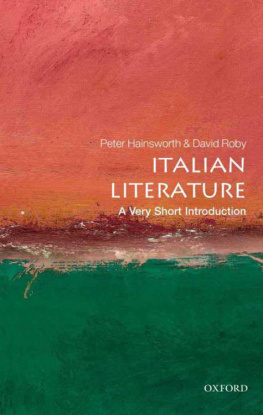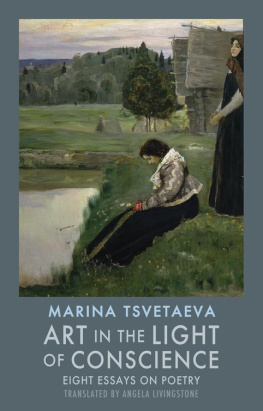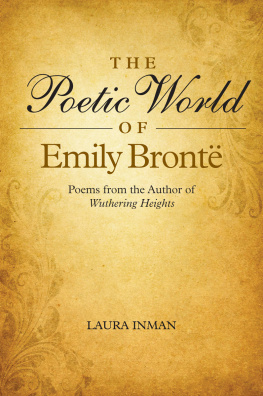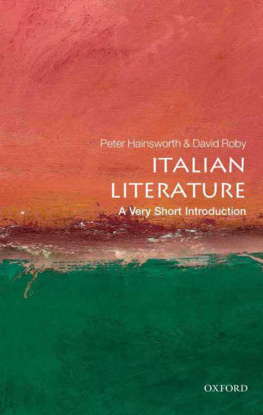Routledge Revivals
Petrarch the Poet
In this critical and historical interpretation of Petrarchs major Italian work, the collection of poems he called the Rerum vulgarium fragmenta, Peter Hainsworth presents Petrarch as a poet of outstanding sophistication and seriousness, occupied with issues which are still central to debates about poetry and language.
In the Rerum vulgarium fragmenta Petrarch reformed the received Italian tradition, creating a new kind of lyric poetry. In particular, he found solutions to the intellectual, linguistic and imaginative problems which Dantes Divine Comedy posed for the succeeding generation of poets. Petrarch the Poet illumines the complexities of Petrarchs poetic vision, which is simultaneously a form of autobiographical narrative, a poetic encyclopaedia and a meditation on the nature of poetry.
The book will appeal to Italian specialists, to those interested in European poetry of the Middle Ages and the Renaissance, and also to readers interested generally in the nature and function of poetry.
First published in 1988
by Routledge
This edition first published in 2014 by Routledge
2 Park Square, Milton Park, Abingdon, Oxon, OX14 4RN
and by Routledge
711 Third Avenue, New York, NY 10017
Routledge is an imprint of the Taylor & Francis Group, an informa business
1988 Peter Hainsworth
The right of Peter Hainsworth to be identified as author of this work has been asserted by him in accordance with sections 77 and 78 of the Copyright, Designs and Patents Act 1988.
All rights reserved. No part of this book may be reprinted or reproduced or utilised in any form or by any electronic, mechanical, or other means, now known or hereafter invented, including photocopying and recording, or in any information storage or retrieval system, without permission in writing from the publishers.
Publishers Note
The publisher has gone to great lengths to ensure the quality of this reprint but points out that some imperfections in the original copies may be apparent.
Disclaimer
The publisher has made every effort to trace copyright holders and welcomes correspondence from those they have been unable to contact.
A Library of Congress record exists under LC control number: 88009681
ISBN 13: 978-0-415-74045-6 (hbk)
ISBN 13: 978-1-315-81562-6 (ebk)
Additional materials are available on the companion website at
[http://www.routledge.com/books/series/Routledge_Revivals]
First published in 1988 by
Routledge
11 New Fetter Lane, London EC4P 4EE
Published in the USA by
Routledge
a division of Routledge, Chapman and Hall, Inc.
29 West 35th Street, New York NY 10001
Peter Hainsworth 1988
Set in 10/12 Sabon by Columns of Reading
Printed in Great Britain by
TJ Press Ltd., Padstow, Cornwall
All rights reserved. No part of this book may be reprinted or reproduced or utilized in any form or by any electronic, mechanical, or other means, now known or hereafter invented, including photocopying and recording, or in any information storage or retrieval system, without permission in writing from the publishers.
British Library Cataloguing in Publication Data
Hainsworth, Peter, 1942
Petrarch the poet: an introduction to
the Rerum vulgarium fragmenta.
1. Poetry in Italian. Petrarch, Francesco
Critical Studies
I. Title
851.1
Library of Congress Cataloguing in Publication Data
Hainsworth, Peter.
Petrarch the poet: an introduction to the Rerum vulgarium fragmenta / Peter Hainsworth.
p. cm.
Bibliography: p.
Includes index.
1. Petrarca, Francesco, 13041374. Rime. I. Title.
PQ4478.H35 1988
851.1dc19
889681
CIP
ISBN 0-415-00270-2
This book is an introduction to Petrarchs major work in Italian, the collection of poems which he called the Rerum vulgarium fragmenta though it is also known as the Canzoniere or the Rime sparse. My aim is in part to provide information. It is also to give a critical and historical interpretation of Petrarchs poetry. Some recent studies have presented Petrarch primarily as a medieval writer and a moralist who composed a form of perhaps exemplary autobiography in poetry. My approach is rather to see him as a poet whose moral and religious concerns are intimately bound up with an examination of the nature of poetry in the post-Dantesque era and whose work constitutes its ambiguous renewal, largely within a framework which derives from early Italian humanism. A more deep-rooted attitude towards Petrarch with which I also implicitly take issue is Anglo-Saxon mistrustfulness of him, which begins with Sidneys indifference to his long-deceasd woes and extends through nineteenth-century puzzlement or horror at what were variously seen as vacuousness, scholasticism, bad puns, impossible imagery and immoral refinement, to Ezra Pounds forthright condemnation of his fustian and ornament. The Petrarch I have tried to describe is an extremely serious poet self-conscious, scholarly, subtle, diverse, absorbed in problems which regard poetry generally, absorded too in the problem of the bewildering beauty of his own poetry. Now that the great figures of twentieth-century modernism, who tended to look to Dante as a model of total literature, have themselves become part of the past, Petrarchs equivocal solutions to the problems which he faced may strike chords, though his humanism necessarily preserves a distance between himself and any post-modernism.
Without the work of Petrarchan scholars and interpreters of the last hundred years this book would not exist. As will be evident to those who know, its particular perspective is dependent on synthesising what others have done, though the synthesis is necessarily selective and the perspective necessarily partial. As has become increasingly evident, Petrarch is an immensely complex and multifaceted figure. Any single study can only hope to do justice to him through being open-ended, through leading the reader into his work, not out of it. Although I have arrived at conclusions, which I make as explicit as possible, I have aimed at this form of introduction too.
Petrarch is concerned with words even more than most poets. Whilst I have tried to avoid technical jargon, a great deal of what I have to say is about language about its meanings, suggested or explicit, about the forms it takes and their poetic significance. I have quoted extensively, providing translations which are as literal as is decently possible and intended solely to facilitate understanding of the bare meaning of the words in English.
I have reduced bibliographical references in the text to a minimum. The bibliographical notes at the end of the book indicate further reading on the topics covered in each chapter. The Bibliography itself is restricted to works cited, and, together with the bibliographical notes, is intended to be useful, not comprehensive, even in its coverage of recent writing about Petrarch. I have used the authordate system of reference throughout.
Various friends and colleagues helped me, directly or indirectly, to complete what often seemed an impossible task. I wish particularly to thank Michael Caesar, who provided the original impulse to write a book about Petrarch, David Thomas, who gave me unfailing assistance with the resources of the Taylorian Library in Oxford, and, most of all, John Woodhouse, whose detailed reading of the typescript was invaluable. Faults and inadequacies are, of course, mine.


